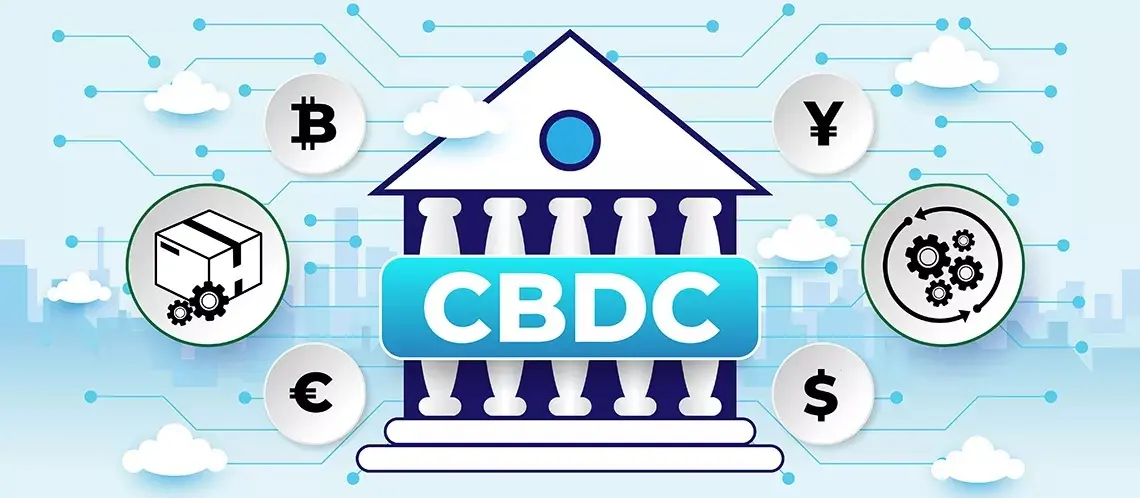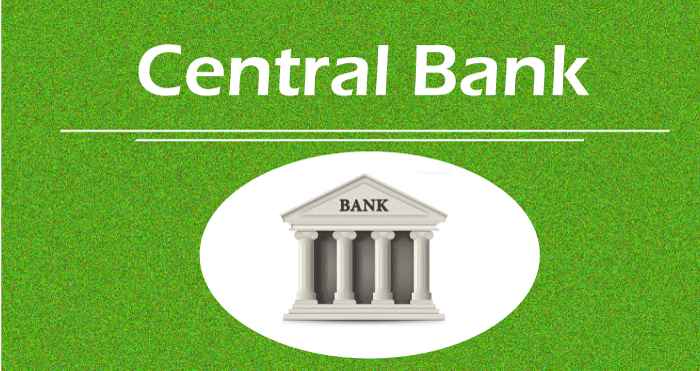Impact of CBDC on bank lending is not just another buzz phrase in the financial world; it’s a game changer. Stand by as banks gear up for one of the biggest shifts in the lending landscape. We’re heading straight into a digital currency revolution, and every loan, mortgage, or credit line as we know it might never be the same. With central bank digital currencies (CBDCs) on the rise, are banks about to lose their crown in the lending kingdom, or will they adapt to reign supreme? Let’s dissect this shift, understand its roots, and explore how it could totally flip the script on traditional banking models. Buckle up; we’re diving deep into how money’s future might reshape everything from your wallet to Wall Street.
Understanding CBDC and Its Fundamental Impact on Banking
Dissecting the Shift from Physical to Digital Currency
We are moving fast from cash to digital bucks. Central banks worldwide are on it. These digital forms of money are called CBDCs or central bank digital currencies. They come from the bank that prints money. But they live on computers or phones, not in wallets.
This shift means big things for how we use money. With CBDCs, sending money is easy. You can zap cash to a friend or shop online with no sweat. And because it’s all digital, it’s quicker and can be safer too. There’s less risk of losing your money or having it stolen.
Analysing CBDC’s Effects on Traditional Banking Models
CBDCs are already shaking up old banking ways. Banks have common jobs. They keep our money safe, move it around, and lend it out. But with CBDCs, some jobs could change a lot.
Impact on bank profits: Banks earn cash by lending at higher rates than they pay on deposits. With CBDCs, we might keep less money in banks and more in digital wallets. Banks might lend less and see profits dip.
Loan changes: CBDCs might make getting loans easier. The central bank could pump digital money right into businesses. This could help them grow and make jobs.
Risk checks: Banks have to check risks when they lend. With digital money, this could get quicker. Computers and data can help banks make smart choices faster.
Interest rates deeper dive: The central bank sets the costs of borrowing. In a CBDC world, these rates could move fast to help the economy. This means your loan costs could change quicker than before.
Loan ease: With CBDCs, getting a loan could be less of a chore. No need for so much paper or waiting. A few clicks, and you’re set.
Money policy shift: When money goes digital, the rules might change too. Central banks could get new ways to help the economy by using CBDCs.
Bank capital effects: When banks lend money, they need a safety net called capital. With CBDCs, the rules on how much they need could tighten up or loosen.
Overall, CBDCs are set to flip the banking world. New tech makes new chances and new troubles. Banks, businesses, and folks like you and me will watch this new money shape our lives. The way we use, save, and borrow money could look nothing like today. We’re stepping into a new chapter where digital cash might just rule. It’s a wild ride, but it sure is exciting to see where it takes us.
The Consequences of CBDC Integration for Commercial Banks
CBDC and the Transformation of Commercial Bank Loans
Imagine a world where money is just digital. Your cash, now a bunch of numbers on a screen. This could shake up how banks lend money. Banks used to be the sole providers of loans, but now, with CBDCs – short for central bank digital currencies – the game is changing.
What’s a CBDC, you ask? It’s like digital money, but the country’s central bank issues it. It’s legal tender, but just in digital form. This might affect how banks make money. People might start saving in CBDCs instead of bank accounts. That could leave banks with less to lend out. It could cut into how much banks earn too.
But don’t count banks out yet. They can adapt. Banks could use CBDCs to give out loans faster. This could make things better for folks who need quick money. Plus, it could help small businesses get the cash they need to grow. Some say CBDCs could even make banks give better deals to stay competitive.
Potential Challenges and Opportunities for Financial Institutions
Now, let’s get real about the trials and chances here. We’re moving into the new age of digital cash, and that might cause some waves. For banks, there’s the potential hiccup of keeping enough cash on hand. With CBDCs in the picture, people might want to keep their money in digital form. This means banks need to rethink everything from risk checks to how much money they need to keep safe and sound.
But here’s the cool part. Banks can grab some chances to do things better. We’re talking smoother operations, quicker loan approvals, and even cozying up to new tech to keep customers happy. Banks can become more than just places to store cash. They might turn into financial helpers, making life easier for buyers and business owners alike.
So, what’s the bottom line? CBDCs are likely to shake things up. But that doesn’t mean banks will lose their spot in lending. They just need to see the change as a way to get better. By embracing both the tough parts and the wins, banks could keep their crown in the lending business, even in this new digital world.
The Changing Dynamics of Lending in the Digital Currency Era
The Influence of CBDC on Loan Origination and Interest Rates
Ever wondered how a digital dollar might change your local bank? Let me break it down. When central banks issue digital currency, they shake up the old way of doing loans. These CBDCs, or central bank digital currencies, are like money’s new outfit — flashy and digital. So, when banks start handing out loans, they have to deal with this new player on the field.
First off, CBDCs can make interest rates wiggle. Now, banks make cash by lending at higher rates than what they offer savers. But, if we all get access to digital currency straight from the big guys at the central bank, banks might have to offer you more to keep your cash. They might even raise loan rates to make ends meet.
That means, for you and me, loans could get pricier. Banks are also in a tight spot because they have to stay safe — they can’t just give loans to anyone. With digital bucks in the mix, they’ll work even harder to pick who gets a loan. The goal? To make sure they aren’t left holding the bag if someone can’t pay up.
How Central Bank Digital Coins May Affect Loan Accessibility and SME Lending
Now, let’s chat about how this new digital currency can help or hurt our small shop owners. These folks often hit roadblocks when they need a loan to grow their dreams. If a central bank cuts out the middleman — I’m looking at you, traditional banks — by offering CBDCs directly, getting a loan might become a walk in the park for small businesses.
With less hassle to get funds, small and medium enterprises (SMEs) can sprout and thrive. But here’s the twist: if central banks play it too cool and let everyone grab a slice of this digital pie without careful checks, it can spell trouble. We might see loans flopping because they weren’t thought through. Big banks could also turn picky, giving loans only to the sure bets, leaving riskier SMEs out in the cold.
So, we bank on CBDCs to make loans more fair and within reach. But it’s a delicate dance to keep things balanced — we want SMEs growing without flipping the whole lending game upside down. After all, we’re all in this money world together, and it’s all about finding that sweet spot where everyone can prosper.
Adapting to the New Financial Ecosystem: Strategic Responses
Evolving Monetary Policies and Credit Conditions in Response to CBDCs
Picture a world with digital dollars or e-euros on your phone. This is where we’re heading as central banks craft digital versions of their money. This move shakes up how things used to be, especially for banks who give out loans. You might wonder if banks can keep their mighty spot in lending.
Let’s dig into that. Banks make money by lending cash at higher rates than what they offer to savers. When a CBDC comes into play, central banks might bypass traditional banks, lending directly to you and me. That’s a game changer! Now, talk floats around about how this could mean cheaper loans for everyone.
Yet it’s not all smooth sailing. Banks could face hard times if we all start using CBDCs instead of their accounts. They’d have less cash to lend out. Fewer loans mean less profit for them. Banks need to get creative, fast. Some say they should zero in on unique, stand-out services to lure in customers.
They could also join forces with fintech firms — think tech-savvy allies — to stay ahead. This way, they might offer you loans that are easier to get and more tailored to what you need. With a CBDC, central banks could play a bigger part in setting loan costs across the board. This could mean that interest rates might sway with every policy change. To keep up, banks could shift how they price loans or how much risk they take on.
The Future of Retail Banking and Lending in Light of CBDC Implementation
Now, let’s fast forward and chat about the future high street bank. We could see a shift where banks bundle services like insurance, loans, and savings into a one-stop-shop solution. A response to the squeeze CBDCs put on them. This might keep them relevant and keep us walking through their doors.
Loans might look different too. With a CBDC, central banks could have new ways to spur lending or cool it down, affecting what kinds of loans banks offer. A CBDC could launch the idea of smart loans — loans with rules built in, set to adjust over time. If that happens, loans could be more hands-off and adapt to changes for you.
It’s clear banks are on their toes with CBDC in the picture. They need to flex and bend, finding fresh ways to stay a beacon for borrowers. Banks might push to offer better deals on loans or personalized, nifty services that a CBDC alone can’t deliver. As they say, when one door closes, another opens. This could be banks’ time to reinvent and shine, even in our increasingly digital world.
So, what do you think? Can banks keep their crown in lending’s new age, or will CBDCs rewrite the rules? One thing’s for sure, it’s a race pockets are watching closely.
We’ve explored how digital cash, or CBDC, is reshaping banks and money itself. From the move to digital bucks to changes in loans and lending, it’s clear: banking is in for a big change. CBDC could make getting loans easier, especially for small businesses, but it’s not all smooth sailing. Banks will face new challenges and must adapt or fall behind.
As we look ahead, banks will need to adjust their strategies to keep up with these digital dollars. The new rules of money mean new ways to handle loans, credit, and day-to-day banking. It’s a whole new world for banks, and we’re just seeing the start of it. Let’s watch closely as CBDCs start to play their role in our pockets and our lives.
Q&A :
How will CBDCs affect traditional banking systems, specifically in terms of bank lending?
With the introduction of Central Bank Digital Currencies (CBDCs), traditional banks are expected to face certain transformations. In terms of bank lending, the impact largely depends on the CBDC design and implementation strategy. Some potential effects include changes in the deposit base, adjustments in interest rates, and possibly a shift towards more reliance on stable funding sources other than customer deposits. A CBDC could also influence credit allocation by providing an additional mechanism for central banks to steer economic development.
Are there risks to bank lending posed by the widespread adoption of CBDC?
Indeed, CBDCs carry some risks for bank lending. One major concern is disintermediation, where customers might prefer holding CBDCs over bank deposits, leading to reduced liquidity for traditional banks and potentially affecting their ability to lend. Additionally, if a CBDC provides a safer alternative to bank deposits, this could increase the cost of bank funding and affect lending activities. Banks might need to innovate to maintain their competitive edge in lending amidst the presence of CBDCs.
Could the introduction of CBDC lead to increased competition in the lending market?
The emergence of CBDCs could potentially increase competition in the lending market, especially from fintech companies and non-traditional financial service providers. These entities might integrate CBDCs into their platforms and offer alternative lending solutions, which can compete with traditional bank offerings. As a result, banks could face pressure to improve their services, reduce costs, and offer more favorable terms to remain competitive in the lending sector.
How will CBDCs influence interest rates and bank’s lending capabilities?
CBDCs could affect interest rates in various ways. On one hand, central banks might use CBDCs to implement monetary policy more directly, which could lead to more precise control over interest rates. On the other hand, if CBDCs lead to significant withdrawals from bank deposits, this could result in higher interest rates on bank lending due to decreased liquidity. The final impact on a bank’s lending capabilities will greatly depend on the CBDCs’ economic integration and the central bank’s regulatory framework.
What measures can banks take to mitigate the impact of CBDC on their lending services?
Banks might need to adopt several strategies to mitigate the potential negative impact of CBDCs on their lending services. They can focus on enhancing customer experience, offering more innovative and tailored loan products, and improving efficiency through digitalization. Additionally, banks could foster stronger relationships with their customers, diversifying funding sources, and investing in education to inform customers about the benefits of maintaining bank deposits alongside CBDCs. Engaging with policymakers to shape a favorable regulatory environment could also be essential.






